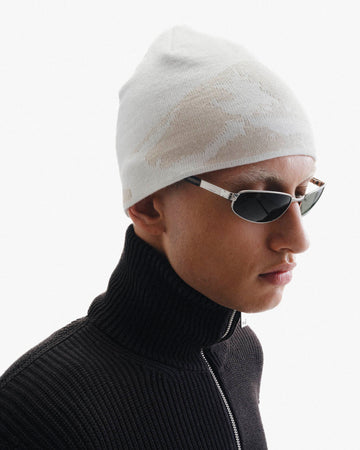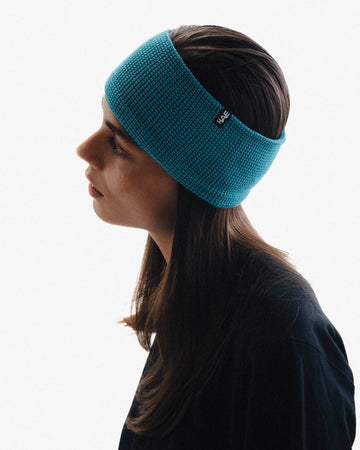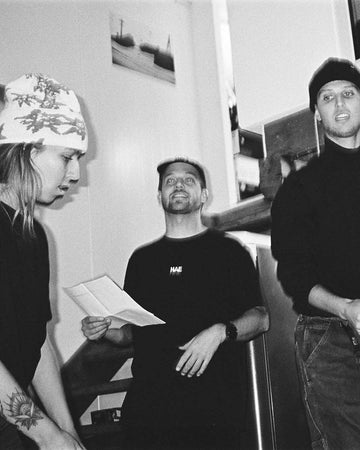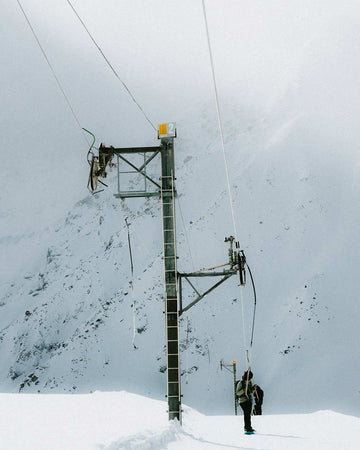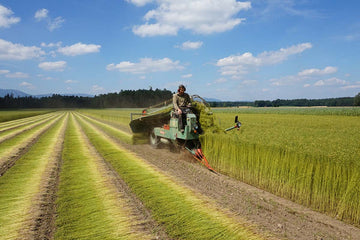Flax, a plant that has been used in textile production for centuries, is experiencing an impressive return to Swiss agriculture thanks to SwissFlax. At HAE , we used the high-quality raw material from SwissFlax to create our limited edition Alpine Flaxer Beanies . Dominik Füglistaller , Managing Director of SwissFlax , was available for an interview a few days ago to tell us more about his vision. Dominik's goal is to make flax sustainable and regional again - a vision that is closely aligned with HAE's values. Like HAE, SwissFlax is committed to sustainability and quality. In this interview, Dominik shares his experiences and provides insights into the challenges and opportunities that flax offers for the future of the textile industry.

How did you come up with the idea of reviving flax in Switzerland? Dominik Flüglistaller, SwissFlax: This was during my agronomy studies. For my diploma thesis, I wanted to try something new and not focus on standard crops like wheat, corn, barley, or rapeseed, so I decided on flax. I tested different varieties and seed rates. When the flax bloomed in mid-June, I knew this plant had potential.
What fascinates you about flax as a raw material?
Fundamentally, it's the versatility of its uses, as the Latin name suggests: Linum usitatissimum (much-usable flax). In other words, the fibers can be used for clothing, carpets, and cords; the shives (the woody part that remains during fiber processing) can be used as animal bedding or processed into pressed boards, for example, and the flaxseeds can be used for human consumption.
Why would someone prefer flax over other materials?
Because it's a natural material with a history and origins here. The material is also breathable, antibacterial, extremely comfortable to wear, and can also have a cooling effect. With a HAE beanie made of SwissFlax, you're sure to keep a cool head.

What is the process from flax cultivation to the finished product?
The flax is sown in late March or early April. It blooms in June and is picked in July, then reeded and baled in August. The bales then need to rest for a while. In winter, the fibers are mechanically extracted. Afterward, the fibers must be carded and finally wet-spun. Only then do you get the linen yarn.
What are the environmental benefits of flax compared to cotton or synthetic materials?
It doesn't require irrigation and is very undemanding in terms of nutrient requirements. This has allowed us to completely eliminate nitrogen fertilizers in recent years. Furthermore, we only use one herbicide in production, meaning we produce according to IP-SUISSE guidelines. By comparison, around one-third of the world's pesticides are used on cotton. Furthermore, it's a renewable resource, which can't be said for synthetic materials.
What hurdles did you have to overcome to produce flax in Switzerland?
All the know-how had to be rebuilt and partners had to be sought who would support us along the value chain all the way to the finished yarn. Moreover, the flax industry wasn't used to the idea that we only wanted our material processed from raw material to finished yarn, and that we were unwilling to compromise on further processing and traceability.

The flax in the fields of SwissFlax
How do you see the future of flax in the textile industry?
I believe in great and diverse potential. Before World War II, we once had 200 hectares under cultivation in Switzerland. Today, we're back at 7.5 hectares and producing around 3.5 tons of yarn. Flax/linen is currently very popular, particularly because of its cooling effect and pleasant wearing comfort. Accordingly, I expect demand to continue to rise and that we'll certainly be able to expand our cultivation area to double digits in the future. Worldwide, this is a real boom. The cultivation area in Europe has doubled in the last 10 years (currently around 170,000 hectares).
Are there any upcoming innovations at SwissFlax that you can tell us about?
Yes, I can actually reveal this: at the 2025 Federal Wrestling and Alpine Festival in Glarus, all wrestling trousers will once again be made from raw materials from Switzerland. This hasn't been the case for the last 70 years. I'm very pleased about that.
How important is it to you to work with local farmers?
In my opinion, that's the most important thing. First of all, as an agronomist, I'm very close to the farmers. I also think that at SwissFlax, we've succeeded in transforming our farmers into more than just raw material suppliers, but rather into an integral part of the company/limited liability company. Furthermore, we've achieved our first goal by paying farmers a completely fair price, allowing flax to become a lucrative business on the farm. We also have a special payment system here, which I believe is unique in agriculture.

What does sustainability mean to you and how does it shape your company?
It's in the company's DNA. We don't make decisions without considering sustainability. This is truly inclusive. In my view, flax, as a local raw material, also inherently contributes to sustainability. The plant doesn't require much input (pesticides, fertilizers, no irrigation), and as a flowering plant, it also provides insects with nectar and pollen and is good for biodiversity. Plucking loosens the soil again, and retting reintroduces nutrients into the soil. Furthermore, the plant is utilized to its full potential.
Thank you, Dominik, for your valuable time and the wonderful Swiss flax you delivered to us. For all readers: The limited edition is available for purchase here .
